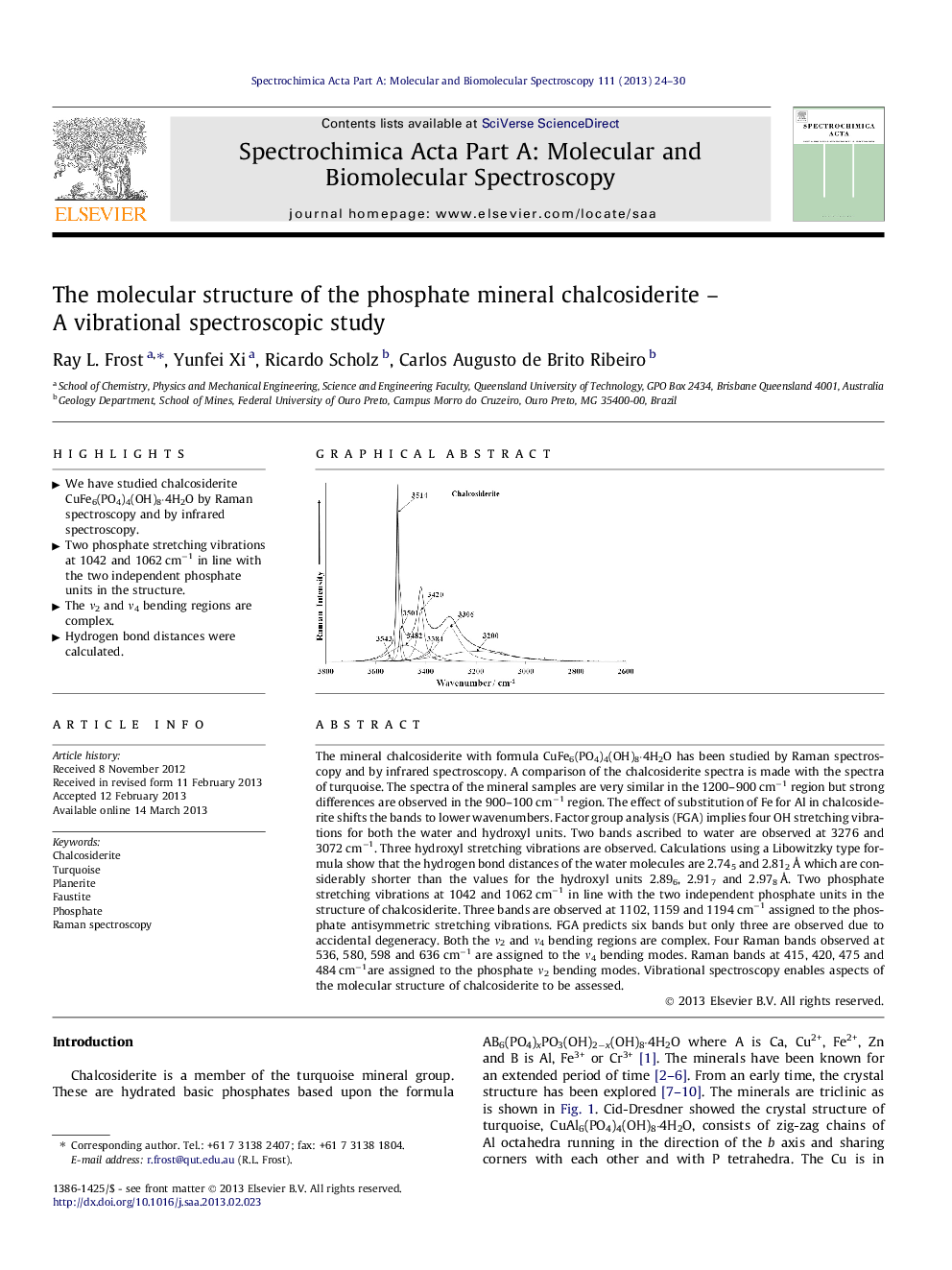| Article ID | Journal | Published Year | Pages | File Type |
|---|---|---|---|---|
| 1233795 | Spectrochimica Acta Part A: Molecular and Biomolecular Spectroscopy | 2013 | 7 Pages |
The mineral chalcosiderite with formula CuFe6(PO4)4(OH)8⋅4H2O has been studied by Raman spectroscopy and by infrared spectroscopy. A comparison of the chalcosiderite spectra is made with the spectra of turquoise. The spectra of the mineral samples are very similar in the 1200–900 cm−1 region but strong differences are observed in the 900–100 cm−1 region. The effect of substitution of Fe for Al in chalcosiderite shifts the bands to lower wavenumbers. Factor group analysis (FGA) implies four OH stretching vibrations for both the water and hydroxyl units. Two bands ascribed to water are observed at 3276 and 3072 cm−1. Three hydroxyl stretching vibrations are observed. Calculations using a Libowitzky type formula show that the hydrogen bond distances of the water molecules are 2.745 and 2.812 Å which are considerably shorter than the values for the hydroxyl units 2.896, 2.917 and 2.978 Å. Two phosphate stretching vibrations at 1042 and 1062 cm−1 in line with the two independent phosphate units in the structure of chalcosiderite. Three bands are observed at 1102, 1159 and 1194 cm−1 assigned to the phosphate antisymmetric stretching vibrations. FGA predicts six bands but only three are observed due to accidental degeneracy. Both the ν2 and ν4 bending regions are complex. Four Raman bands observed at 536, 580, 598 and 636 cm−1 are assigned to the ν4 bending modes. Raman bands at 415, 420, 475 and 484 cm−1are assigned to the phosphate ν2 bending modes. Vibrational spectroscopy enables aspects of the molecular structure of chalcosiderite to be assessed.
Graphical abstractFigure optionsDownload full-size imageDownload as PowerPoint slideHighlights► We have studied chalcosiderite CuFe6(PO4)4(OH)8⋅4H2O by Raman spectroscopy and by infrared spectroscopy. ► Two phosphate stretching vibrations at 1042 and 1062 cm−1 in line with the two independent phosphate units in the structure. ► The ν2 and ν4 bending regions are complex. ► Hydrogen bond distances were calculated.
